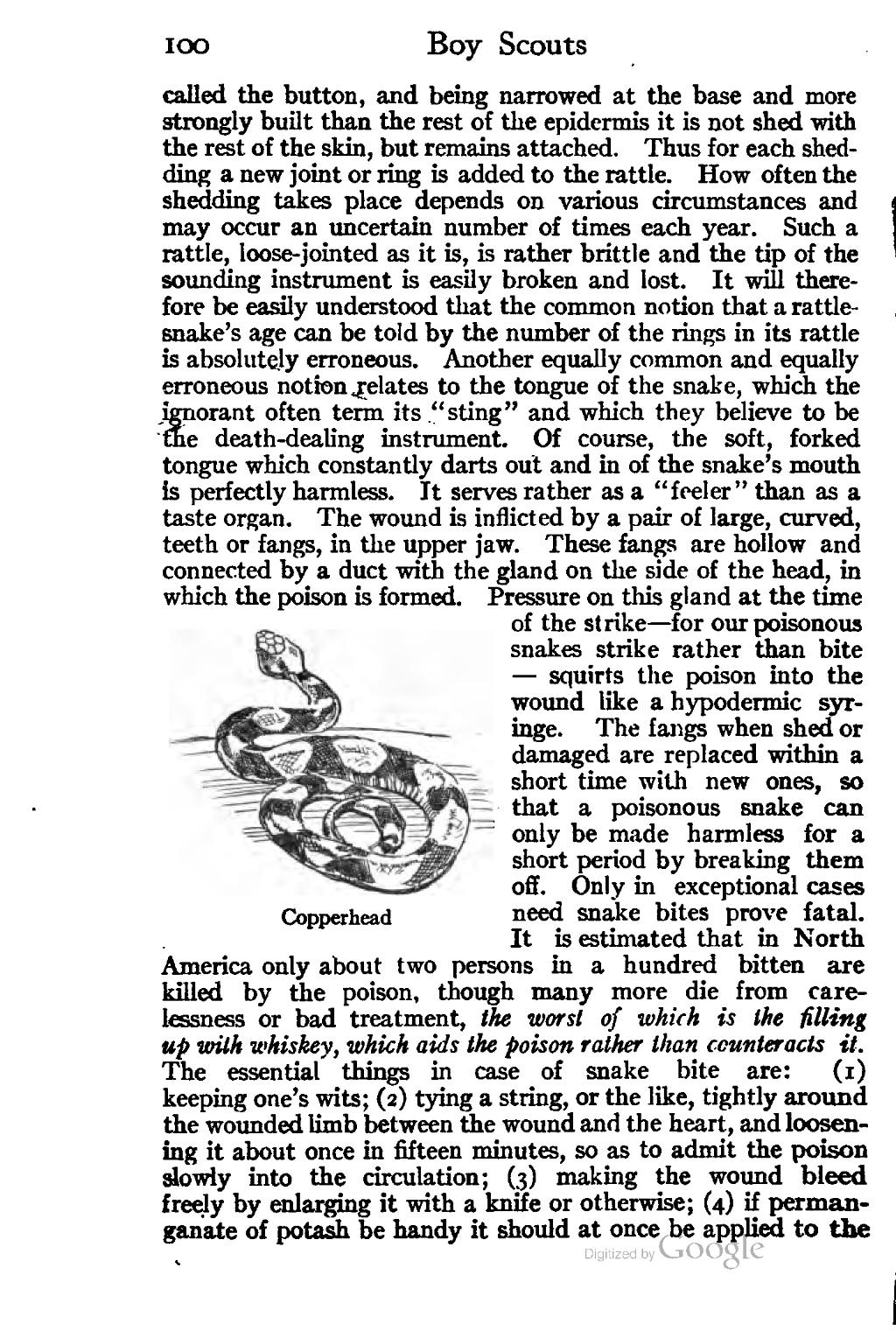IO0 Boy Scouts called the button, and being narrowed at the base and more strongly built than the rest of the epidermis it is not shed with the rest of the skin, but remains attached. Thus for each shed- cling a new joint or ring is added to the rattle. How often the shedding takes place depends on various circ?m.?tances and may occur an uncertain number of times each year. Such a rattle, loose-jointed as it is, is rather brittle and the tip of the sounding instrument is easily broken and lost. It will there- fore be easily understood that the common notion that a rattle- snake's age can be told by the number of the rings in its rattle is absolutely erroneous. Another equally common and equally erroneous notion.?elates to the tongue of the snake, wh/ch the f?gnorant often term its .!'sting" and which they believe to be 'fiae death-dealing instrument. Of course, the soft, forked tongue which constantly darts out and in of the snake's mouth is perfectly harmless. It serves rather as a "feeler" than as a taste organ. The wound is inflicted by a pair o large, curved, teeth or fangs, in the upper iaw. These fangs are hollow and connected by a duct with the gland on the side of the head, in which the poison is formed. Pressure on this gland at the time of the str/ke--for our poisonous snakes strike rather than bite -- squirts the poison into the wound like a hypodermic syr- inge. The Ia?gs when shed or damaged are replaced w/thin a short time with new ones, so that a poisonous snake can only be made harmless for a short per/od by breaking them off. Only in exceptional cases Copperhead need snake bites prove fatal. It is estimated that in North America only about two persons in a hundred bitten are killed by the poison, though many more die from care- lessness or bad treatment, the worst of which is ti? ??lli?g up urilh whiskey, which aids ttt, poison rather than counteracts it. The essential things in case of snake bite are: (z) keeping one's wits; (2) tying a string, or the like, tightly around the wounded limb between the wound and the heart, and loosen- ing it about once in fifteen minutes, so as to admit the poison alowty into the circulation; (3) making the wound bleed freql. y by enlarging it with a knife or otherwise; (4) if perman- ganate of pot?qh be handy it should at oncefiae apglied to the Digitized
Stránka:roll 1911.djvu/121
Z thewoodcraft.org
Tato stránka nebyla zkontrolována
